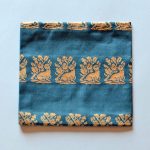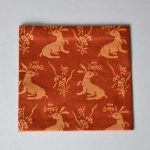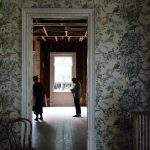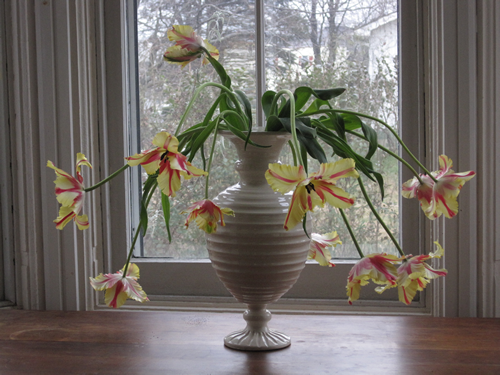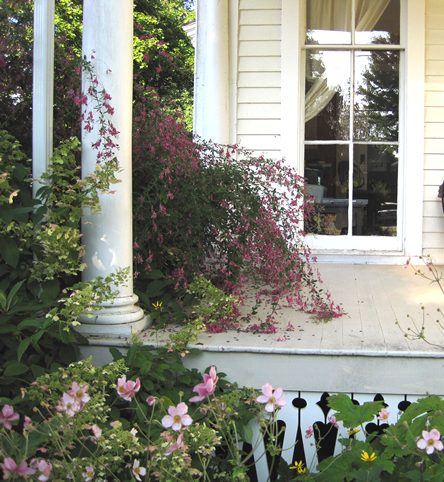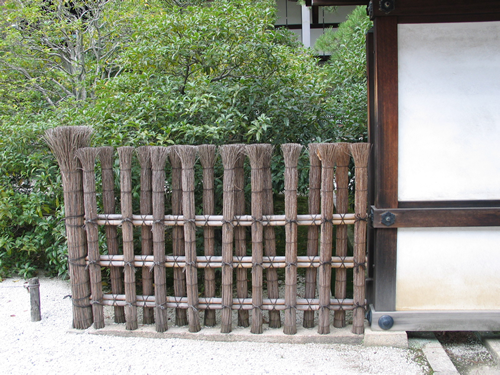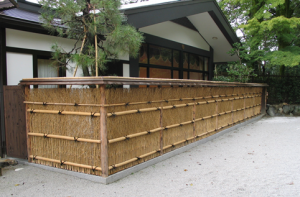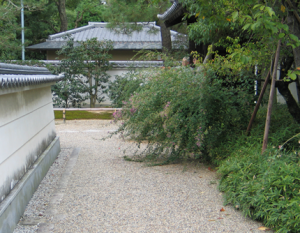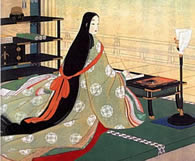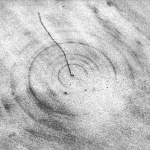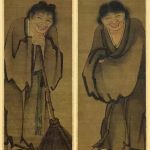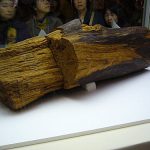Crimson colors
Sei Shonagon sometimes gets irritated with those who wear unsuitable things like “crimson skirted trousers” at the wrong time. And then at times she loves “a white coat worn over a violet waistcoat.”
Fabric has always been important in Japan. Today in Kyoto you can visit the shop of Kitamura Tokusai who will bring out sample after sample of old and ancient fabrics that are now used in the tea ceremony to hold a tea bowl in hand. They are called Kobukusa and are much admired. Dazzling and splendid.
Things That Lose by Being Painted
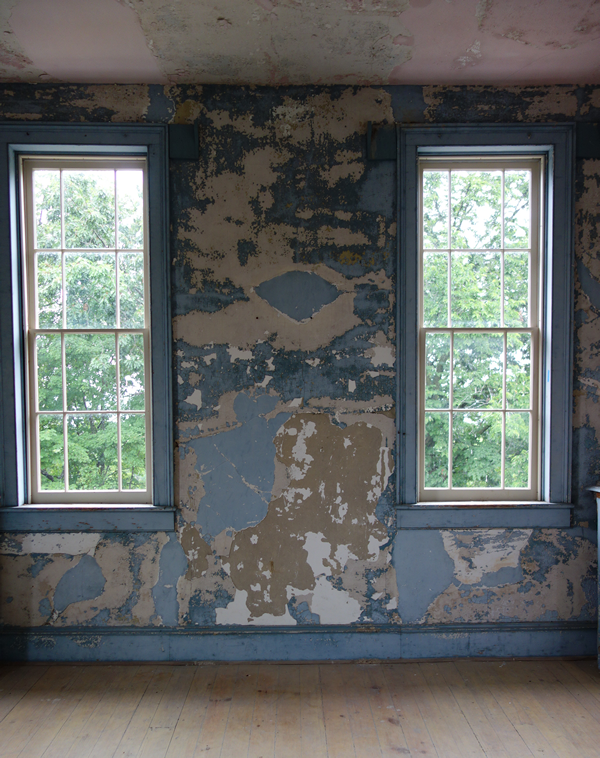
Sei Shonagon in The Pillow Book has a short list for Things That Lose by Being Painted: “Pinks, cherry blossoms, yellow roses. Men or women who are praised in romances as being beautiful.”
I was invited to a Beethovan string quartet concert at the surviving A.J. Davis Hudson River villa, the Dr. Oliver Bronson House in Hudson, NY. A.J. Davis was one of America’s greatest architects and the house is fantastic. The bones are all there and it’s being restored, but right now it’s a beautiful place with it’s peeling paint and marvelous hundred year old wall paper.
A beautiful woman
It was hard to find what Sei Shonagon would say about a woman living on a dairy farm in Dutchess County, New York in the 1970’s.
This photograph of my mother was taken at Hardstone Farm, where we lived for over twenty years. It was a working dairy farm outside of Rhinebeck, NY. Here she’s in the lower field which flooded every spring. My sister and I love this picture because it shows her vibrantly alive, running in the muck of the fields and she is happy. Just out of sight her dog is chasing after her.
She didn’t shy away from adventure. When I lived in Colorado in the early 70’s (and she must have been in her 50’s), she drove her VW convertible Beetle across the country to visit. It was a long, hard drive and she camped out along the way with three fellow travelers who pitched in for the ride. You could do that in those days. She and I then drove her car down to Santa Fe through the four corners of Monument Valley to New Mexico because I wanted to share this amazing place with her.
She loved it. One night we were on the road to somewhere outside of Santa Fe and got lost. We were way out in the desert. It was summer. The convertible was down. The sky was a black bowl of stars twinkling endlessly. The road stretched straight ahead for miles and miles illuminated brightly by starlight and nothing else. There wasn’t a sign, a gas station, a motel, a city lit up in the distance. Nothing as far we could see.
We were hopelessly lost, but so completely enveloped by the perfect endless universe – that all of a sudden it seemed absurd to think we could be anywhere else but at home. We started to laugh and laugh. It was a kind of epiphany. We laughed so hard she couldn’t hold onto the steering wheel and had to stop the car. We didn’t even pull over because as far as we could see the road stretched before us and behind us with nothing in sight.
We were at home in the beautiful, vast universe that seemed to just swallow us up in it’s perfection.
Digging into the past
I was fascinated with the picture of this tree when I was a little girl. It hung in the stairway of my grandparent’s Boston home and shows all the different branches of my family since 1620.
The tree looks like it could be an American Chestnut. A native of the north eastern United States, it was able to grow 98 feet high, 9 feet in diameter and was one of North America’s most important forest trees until it suffered a terrible blight in 1904. It has almost become extinct.
Most of my ancestors would have known this tree. Resistant hybrids are making a comeback, so maybe in a few hundred years my family will again know and love this great tree.
My fascination as a kid was following the branches; seeing where they went and where they ended, kind of like a maze. I wanted to find the people I heard stories about, like the one about the soldier who stood up to look around in a corn field and was shot by Indians.
But now when I look at this tree I see my roots, not only the people but the culture and influences that made them who they were, and me who I am. I see names I’ve never heard of that come directly from the Old Testament – something I’ve never read and confess am quite ignorant about. Who were Benaiah, Penuel, Zebulon, Tirzah and Jedediah? My ancestors actually had these names!
I looked them up in the Old Testament and, of course, Google. To me, the Old Testament is like a census, or an old fashioned Ancestry.com, which yes – I did sign up for and have successfully traced hundreds of people though time. It’s another tree; following branches, searching for beginnings.
In the ninth month – Hagi
In one of the most poignant scenes of The Tale of Genji when Murasaki is dying, she writes her last poem:
“So briefly rests the dew upon the hagi
Even now it scatters in the wind.”
I associate Hagi with all the poetry and romanticism of Japan and it was one of the first things I planted in my garden. I love how it cascades over my front porch in the autumn.
Bush Clover ( Lespedeza Japonica), known in Japan as ‘Hagi’, is one of the seven grasses of autumn and is mentioned in hundreds of verses of the Manyoshu poetry anthology compiled in the 9th century. Hagi is associated with dew and fleeting qualities of life.
In the Hein period of Sei Shonagaon, clothing was formal and women wore many layers of kimono. Color combination of the layers was of prime importance and the names given to the colors were associated with nature, usually plants and flowers. There was a ‘Hagi’ combination of maroon over spring-shoot green, worn only in the autumn.
When I was in Japan I saw Hagi growing everywhere. Brushwood fences are even made from it’s branches.















